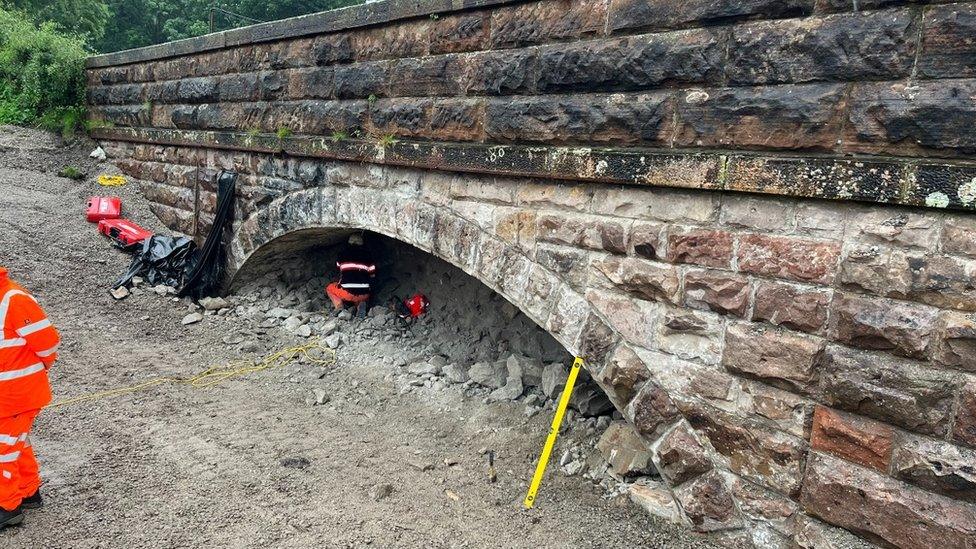Cost of removing bridge's concrete infill revealed

The bridge pictured soon after the infill was installed in 2021
- Published
Removing concrete from a Victorian railway bridge in Cumbria cost nearly triple the amount it cost to install.
National Highways poured hundreds of tonnes of concrete under Great Musgrave Bridge, near Brough, in July 2021, after claiming it was unstable.
It was refused retrospective planning permission and the former Eden District Council ordered it to be removed.
National Highways has revealed it cost about £352,000 to remove the infill, which is about three times the £124,000 it cost to do the work.
Mike Thompson, from the volunteer-run railway restoration group Stainmore Railway Company, described the cost as “eye-watering”.
“The damage has been caused by National Highways through its blinkered approach to managing these assets and a lack of dialogue with stakeholders,” he said.
“They should have to put things right. In that respect, we’ve been very lucky.”
The infill was initially installed because National Highways feared the structure could collapse if used by heavy vehicles.
It was later told by Eden District Council to remove the infill, and further tests determined the bridge could subsequently be reopened with no additional weight restrictions.

National Highways was ordered to remove the concrete by the former Eden Borough Council
Hélène Rossiter, from National Highways, said: “It cost £352,000 to safely and carefully remove the infill without damaging Great Musgrave bridge.”
Ms Rossiter said it would continue to inspect the bridge annually and deliver any future repairs that may be required so the bridge can be used for “many more years to come”.
She said National Highways would keep listening to the community when it came to figuring out how to best manage historic railway assets.
Graeme Bickerdike, a member of the HRE group which advocates for heritage railway sites, said that National Highways had wasted “almost half-a-million pounds on a structure that, prior to its infilling, was fundamentally fine”.
“The country’s legacy railway assets were gifted to us by skilled craftsmen during a period of exceptional ambition and courage during the Victorian era,” he said.
“They will continue to serve us for many more years if we look after them properly.”
Follow BBC Cumbria on X (formerly Twitter), external, Facebook, external and Instagram, external. Send your story ideas to northeastandcumbria@bbc.co.uk.
Related topics
- Published12 October 2023

- Published14 August 2023
